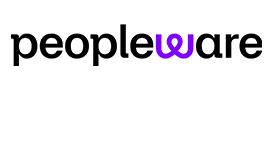Writing for injixo, Twan de Leijer explains six signs your employees are disengaged.
Employee engagement can be a huge problem. The latest employee engagement trend report by Quantum Workplace reports that 30% of the workforce is moderately engaged at best (that is 1 out of 3 employees!).
Another study, by Cornell University, reports that contact centres experience a 25% to 33% attrition rate on average. But depending on the size of the centre and the industry, average turnover rates are between 45% and 60%.
In extreme cases, turnover rates have even exceeded 100%; that means the entire workforce was replaced within one year.
Cost of Call Centre Turnover
Replacing an employee can be really expensive. If you include the cost of advertising for the position, the recruiting costs (interviewing, background checks, etc.), onboarding costs, and the agent’s salary during onboarding, it is estimated that hiring one employee will typically cost you anywhere between $5,000 and $7,500.
Agent turnover would cost a 100 agent contact centre with 30% attrition between $150,000 and $225,000 per year!
For a contact centre with 100 agents and an average attrition rate of 30%, this could result in a yearly cost of between $150,000 and $225,000! And this is just the direct costs associated with hiring a new agent.
The indirect costs (like reduced productivity, reduced customer satisfaction, etc.) aren’t even included in this conversation.
So, how do you know if you might be suffering from high employee disengagement?
Tell-Tale Signs That Your Employees Are Disengaged
1. Low Employee Satisfaction Scores.
The most direct way of knowing if your employees are disengaged is simply asking them directly. You could, for example, run a monthly eNPS survey (employee net promoter score) to gauge how satisfied your employees are and enable you to detect trends quickly.
2. Reduced Quality of Work.
If the quality of work is reduced or below par, then this could signal a low level of employee engagement. An excellent metric to look into is the the first contact resolution rate (FCR), which you are probably already measuring.
According to MetricNet’s benchmarking database, the average net FCR for service desks worldwide is about 74%. So, if yours is significantly below that, or if you see a downward trend for this metric, you have to dig deeper.
As engaged employees feel more ownership toward solving customers enquiries, it is very likely that a low score on FCR could be the result of a low morale.
3. High Attrition Rates.
The contact centre space is known for its high levels of employee attrition. However, as the unemployment rate is historically low, it is becoming increasingly challenging to recruit new employees.
Therefore, retaining employees has gained strategic focus, and as a result, companies have invested heavily in employee retention strategies. Still, completely ruling out employee attrition in the contact centre space seems unrealistic.
Nonetheless, if you experience an unusually high attrition rate, then this is a clear sign that your contact centre agents are not engaged.
4. Low Schedule Adherence.
A more subtle indicator that your employees may be unengaged is low schedule adherence. Employees that are not engaged tend to be late for shifts, go home early, or take longer breaks than scheduled. This results in a lower schedule adherence.
If your schedule adherence drops below 85%, then this might be a sign that your employees are not engaged and this would need to be investigated further.
5. High Levels of Absenteeism.
If morale is low, what you’ll usually see is a high level of absenteeism. A study of over 2000 call centres reported that the average number of sick days taken per year per person in a contact centre setting was roughly 8.2 days.
If your level of absenteeism is significantly higher, you need to take action. Of course, there may be legitimate reasons for this number to be higher (like a wave of influenza). However, if this number is consistently higher, you may be seeing the symptoms of an unengaged workforce.
6. Low Customer Satisfaction.
You may have heard the sentence “happy employees, happy customers” before. The flip side of this common truth is that unhappy employees result in unhappy customers.
So, to round up the list, a low level of customer satisfaction (CSAT) could be the result of unengaged employees. It is difficult to say what level of CSAT is acceptable and at what levels you should start to worry. This is because industry average CSAT scores vary wildly.
The recommendation is to
- make sure to measure this metric over time in order to be able to spot downward trends, and
- invest in gathering benchmark data from within your industry or niche to be able to put your metric into perspective.
Strategies to Improve Agent Engagement in Your Contact Centre
A highly engaged workforce is the end result of many factors. Your contact centre strategy in its entirety will have a significant impact on employee engagement. That’s why every department should list employee engagement as a priority.
This blog post has been re-published by kind permission of Peopleware – View the Original Article
For more information about Peopleware - visit the Peopleware Website
Call Centre Helper is not responsible for the content of these guest blog posts. The opinions expressed in this article are those of the author, and do not necessarily reflect those of Call Centre Helper.
Author: Peopleware
Published On: 14th Jul 2023 - Last modified: 9th Dec 2024
Read more about - Guest Blogs, Peopleware






 Peopleware is the award-winning, multi-channel cloud workforce management application for contact centers and customer support. Over 300 customers, ranging in size from 50 to over 4,000 seats, trust Peopleware to bring work and demand in perfect balance while embracing the constant change in their business. With Peopleware, you spend less time and effort on manual forecasting and scheduling, while maximizing efficiency and focusing on what really matters: your people and customers.
Peopleware is the award-winning, multi-channel cloud workforce management application for contact centers and customer support. Over 300 customers, ranging in size from 50 to over 4,000 seats, trust Peopleware to bring work and demand in perfect balance while embracing the constant change in their business. With Peopleware, you spend less time and effort on manual forecasting and scheduling, while maximizing efficiency and focusing on what really matters: your people and customers.





























